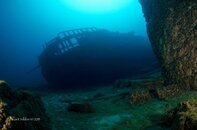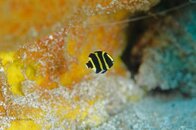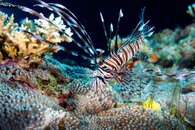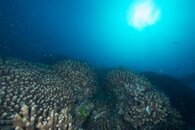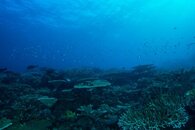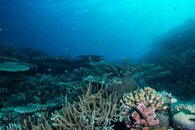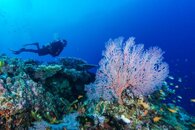dwilliams
Registered
I recently finished my first dive trip with my new D800 and boy was it a shock. Whilst I was eventually able to take some fairly good shots with the camera I can't say I ever got to the stage where I felt confident or comfortable with it. I have thoroughly read the manual for the D800 as well as both the essential and advanced guide to digital underwater photography.
Of course it probably didn't help that it is my first DSLR camera but even so I wasn't really prepared for the steep learning curve. I know I probably should have gone with something more basic but my previous outfit was a Sony RX 100 with nauticam housing that costs me close to $3000. I didn't want to go entry level DSLR only to have to replace it again in another year or so.
I was therefore, hoping that a few of our more experienced poeple who have shot with the D800 underwater might be able to answer a few queries regarding some of the settings.
Firstly though I should outline what my setup is. I'm using the Nauticam housing with 2 Inon Z240 strobes. I have a Nikon 14-24mm for wide angle and the Nikon 60mm for closer stuff. The 14-24mm I'm using a 8 inch acrylic dome port and the 60mm a macro port.
The area I'm most uncertain on is the auto-focus, metering and strobe settings for each of the lens. Whilst the manual is somewhat useful I still find myself wondering whether the settings I'm using are optimal. Should I be shooting AFS or AFF, wide or spot focus etc etc.
For the 14-24mm I shot AFS on wide area AF and wide metering with strobes on TTL. I'm thinking I should probably have been shooting ambient given very little of what I was shooting was CFWA. I shot in manual, 100 ISO, with aperture and shutter speed adjusted according to conditions. I did find it difficult to get correct exposure on the focal subject of the shot without having the area of the shot where the sunlight was being overexposed.
For the 60mm, (after originally shooting the same settings as with the 14-24mm doh) I eventually realised something wasn't right and changed to AFF with spot focus and center weighted metering. This worked reasonably well although I found the auto-focus would continually search. I also was struggling with getting sufficient depth of field on some of my shots whilst retaining a high enough shutter speed on moving targets like clownfish. Is it a case of choosing a higher F stop and bumping up the ISO in these cases?
Finally can anyone point me in the direction of a useful resource in terms of strobe settings. I've been running in TTL mode as I'm basically clueless on the manual settings. I think the toughest thing I'm finding is co-ordinating all the settings together with the lens and strobe to take the right photo for the conditions.
I'll post a couple of my better photos when I get back to my home computer (and maybe a couple of not so good ones) if anyone wouldn't mind critiquing.
Of course it probably didn't help that it is my first DSLR camera but even so I wasn't really prepared for the steep learning curve. I know I probably should have gone with something more basic but my previous outfit was a Sony RX 100 with nauticam housing that costs me close to $3000. I didn't want to go entry level DSLR only to have to replace it again in another year or so.
I was therefore, hoping that a few of our more experienced poeple who have shot with the D800 underwater might be able to answer a few queries regarding some of the settings.
Firstly though I should outline what my setup is. I'm using the Nauticam housing with 2 Inon Z240 strobes. I have a Nikon 14-24mm for wide angle and the Nikon 60mm for closer stuff. The 14-24mm I'm using a 8 inch acrylic dome port and the 60mm a macro port.
The area I'm most uncertain on is the auto-focus, metering and strobe settings for each of the lens. Whilst the manual is somewhat useful I still find myself wondering whether the settings I'm using are optimal. Should I be shooting AFS or AFF, wide or spot focus etc etc.
For the 14-24mm I shot AFS on wide area AF and wide metering with strobes on TTL. I'm thinking I should probably have been shooting ambient given very little of what I was shooting was CFWA. I shot in manual, 100 ISO, with aperture and shutter speed adjusted according to conditions. I did find it difficult to get correct exposure on the focal subject of the shot without having the area of the shot where the sunlight was being overexposed.
For the 60mm, (after originally shooting the same settings as with the 14-24mm doh) I eventually realised something wasn't right and changed to AFF with spot focus and center weighted metering. This worked reasonably well although I found the auto-focus would continually search. I also was struggling with getting sufficient depth of field on some of my shots whilst retaining a high enough shutter speed on moving targets like clownfish. Is it a case of choosing a higher F stop and bumping up the ISO in these cases?
Finally can anyone point me in the direction of a useful resource in terms of strobe settings. I've been running in TTL mode as I'm basically clueless on the manual settings. I think the toughest thing I'm finding is co-ordinating all the settings together with the lens and strobe to take the right photo for the conditions.
I'll post a couple of my better photos when I get back to my home computer (and maybe a couple of not so good ones) if anyone wouldn't mind critiquing.




